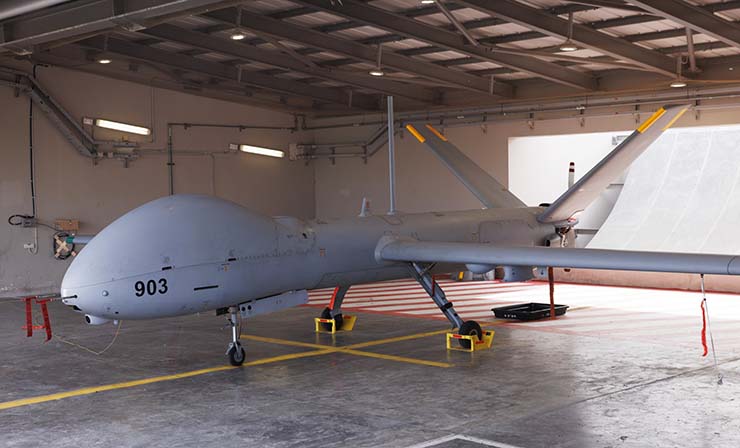
Tel Aviv: The debate in the Israeli Defence Forces (IDF), though low profile now, is going to heat up after the current war ends – Should Israel invest in more advanced combat helicopter or in more armed UAVs?
A very senior source told Raksha Anirveda that an armed UAV can now perform all the missions of a combat helicopter and this while the “targets on the ground are transmitted directly in real time to the armed UAV by the commanders in the battle field”.
The combat helicopter received massive support from the ground forces of the IDF. This resulted in an Israel evaluation for an emergency request for the supply of the Boeing Apache AH-64E version of this helicopter.
If a decision is made soon, Israel will submit the request through CENTCOM. Then it will be channelled to the US MOD. The only option is to get a number of the E version from the US army fleet.
Israel has been evaluating the purchase of the E version for some years but no decision has been made. The ground forces of the IDF showed great interest in the E version. The current war, according to senior sources proved that Apache’s E version helicopter can be a major contribution to the operations of ground forces especially in urban areas.
The Israeli Air Force (IAF) is currently operating the AH64-A (PETEN) and the AH-64D (SARAF). At his moment, the acquisition is pending as the Israeli Air Force (IAF) has earmarked all its budget for the acquisition of the CH-53K and the KC-46A.
The IDF ground forces command had some years ago requested the enhancement of the IAF’s combat helicopters based on the operation lessons from some previous combat in Gaza and Lebanon. The request is for up to 40 Apache E helicopters and the upgrade of the existing fleet of Apache D.
In recent years, the IAF has added Israeli weapon systems to the combat suit of its the Apache combat helicopters.
One very interesting such addition is the adaptation of the Rafael Spike NLOS for launch by the IAF’s Apache helicopters.
Rafael designed the missile, one of the Spike family of missiles, as a defensive weapon system that can engage targets in great precision and in great ranges. The Spike NLOS is combat proven and proved to be an effective tool for both high intensity conflicts (HIC) and low intensity conflicts (LIC) as well. According to Rafael, the Spike-NLOS is one of the most advanced and modern precision weapon system.
The Spike NLOS Missile can be fired in LOS to target using the same principals of the other Spike missiles of tracker lock-on and F&F abilities. The main concept of the weapon system includes the capability to fire in non-line of sight.
The firing to a NLOS target, is based on grid coordinates using INS/GPS navigation and ending missile flight in terminal guidance based on the Electro optical guidance using missile seeker image transmitted to operator via wireless RF data link.
The target coordinates are fed either manually to the Spike NLOS system or selected from pre-defined targets or mission data bank. After the launch, missile flight is according to its automatic navigation algorithm. During flight, manual scan of the target area is possible within the Field of Regard (FOR). Pointing to the target may be resumed any time by pushing a button. Reaching a condition threshold; the Missile terminates its automatic navigation. Terminal guidance is either performed by using tracker lock-on or manual steering the seeker.
According to Rafael, the Spike missiles are now integrated onto more than 10 different attack helicopters and that includes both Spike ER and Spike NLOS. The Spike NLOS is a true “game changer” allowing the helicopter to engage targets at a range of up to 30 km, without line of sight, well out of the enemy air-defence range and without being detected.















